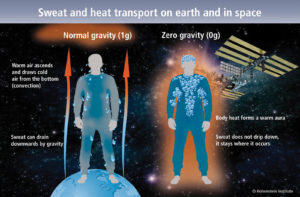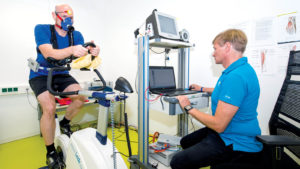
Performance clothing made of fabrics with cooling technology is readily available today. But how would similar fabrics function in space? That’s what a team of researchers wants to know, and they are working to get answers on the International Space Station (ISS). There, German ESA astronaut Dr. Alexander Gerst conducted physiology experiments investigating the interaction of the body, clothing and climate under zero gravity conditions to determine comfort.
Called Spacetex2, the project is expected to help improve the clothing astronauts wear within the ISS, provide direction for clothing for future long-term missions and aid in development of textiles for extreme conditions on earth.
The experiments required that Dr. Gerst sweat a lot, which it turns out is much different under zero gravity than on earth. This detail was discovered in 2014 during the preceding Spacetex project.
On Earth and in space, the human body emits heat when under strain and tries to cool itself down. However, in space, zero gravity changes heat exchange on the surface of the body so there is no loss of heat due to convection. During physical activity, heat builds up more quickly than on earth. The result is that the core body temperature rapidly climbs to values that are too high to be healthy.

Dr. Gerst tested three functional shirts, each with a different cooling performance, that were developed from findings from the first Spacetex project and manufactured specifically for the ISS. He completed six special training sessions with the different shirts on the ergometer or the treadmill. Special sensors monitored physical and metabolic functions, and provided data on respiratory flow, heart frequency and oxygen saturation.
Project partners include the Hohenstein Institute, Charité University Medical Department in Berlin, German Aerospace Centre (DLR) and the European Space Agency. For more information, visit www.hohenstein.de.
 TEXTILES.ORG
TEXTILES.ORG


